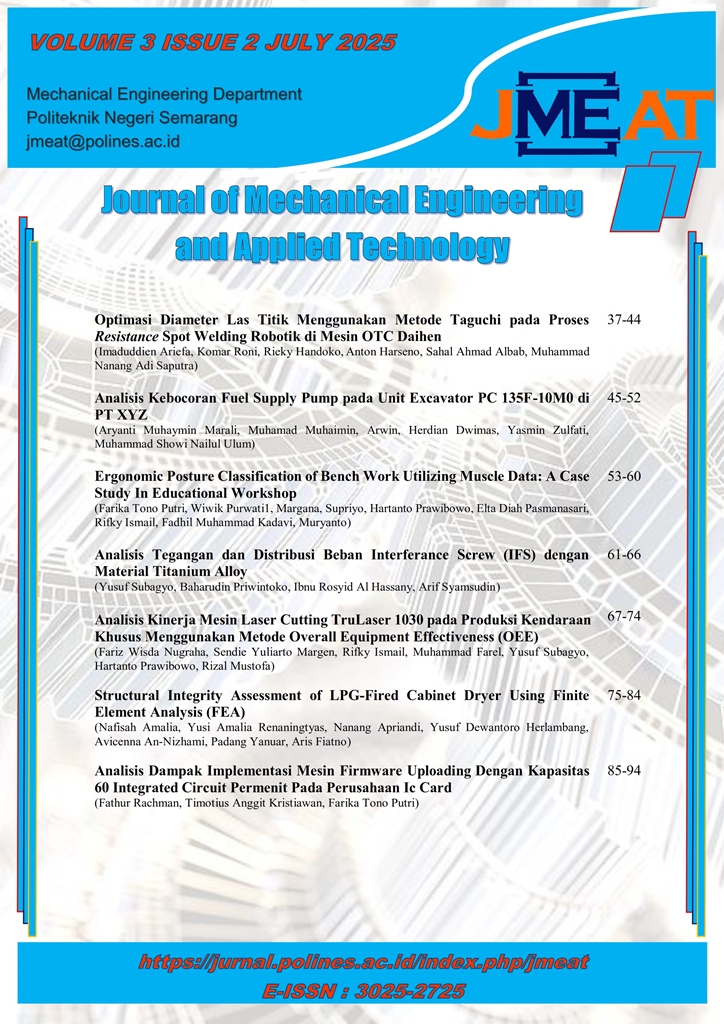STRUCTURAL INTEGRITY ASSESSMENT OF LPG-FIRED CABINET DRYER USING FINITE ELEMENT ANALYSIS (FEA)
DOI:
https://doi.org/10.32497/jmeat.v3i2.6635Abstract
Cabinet-type dryers powered by Liquefied Petroleum Gas (LPG) are widely recognized as an efficient drying solution, particularly for small and medium-sized industries. However, the structural strength and durability aspects of these dryers often receive insufficient attention, although they operate under a combination of static and thermal loads that may potentially trigger structural failure. This study aims to evaluate the structural strength of a cabinet-type LPG dryer using the Finite Element Analysis (FEA) method by considering variations in operating temperature and constant mechanical loading. Simulations were conducted within an operating temperature range of 48.049°C to 75.767°C under a constant load of 40 kg. The key parameters analyzed include total deformation, stress distribution, and structural safety factor. The results revealed a maximum deformation of 1.094 mm and a peak stress of 1030.7 MPa concentrated in the plenum chamber area, identified as a critical zone due to the combined effects of thermal and mechanical loading. The maximum safety factor reached 15, while the minimum value of 0.24255 indicates the need for localized design improvements in certain regions. These findings demonstrate the effectiveness of FEA in predicting the structural response of drying equipment and provide a scientific foundation for enhancing structural safety and reliability. Further studies are recommended to integrate coupled thermal-structural analysis and experimental validation to improve the accuracy of the results.
Keywords: cabinet dryer; finite element analysis (FEA); safety factor; structural analysis; temperature distribution
Downloads
Published
Issue
Section
License

This work is licensed under a Creative Commons Attribution-NonCommercial-ShareAlike 4.0 International License.
Authors who publish articles in this journal agree to the following terms:
The author owns the copyright and grants first publication rights to the Journal with work simultaneously licensed under a Creative Commons Attribution License which allows others to share the work with the work acknowledged and first published in this journal
Authors may enter into separate, additional contractual agreements for the non-exclusive distribution of the journal's published version of the work (for example, posting it to an institutional repository or publishing it in a book), with an acknowledgment of the first publication in this journal.
Authors are permitted and encouraged to upload their work online (for example, in an institutional repository or on an author's website) before and during the submission process, as this can lead to productive exchanges, as well as earlier citations and a larger number of citations of the published work. (See the impact of open Access).






